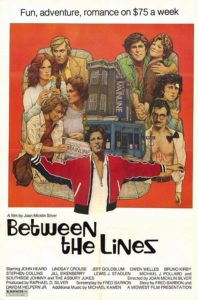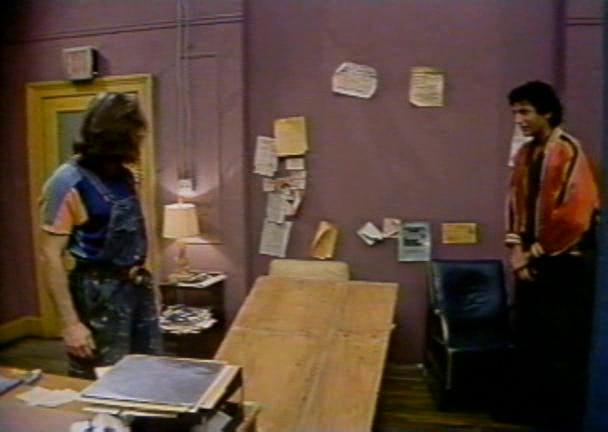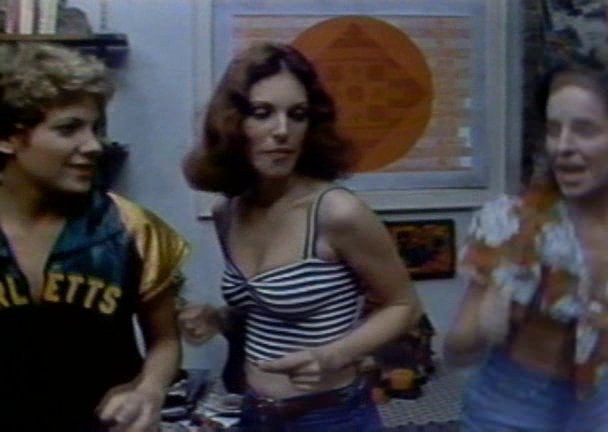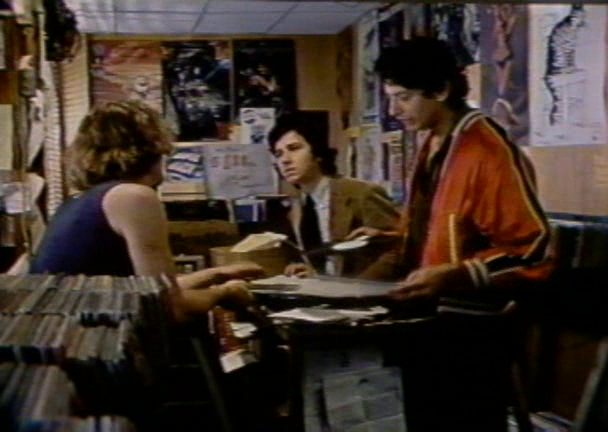Between the Lines (1977)
“We’re still about telling the truth. We’re still about something big here — and not many people can say that now.”
|
Synopsis: |
|
Genres, Themes, Actors, and Directors:
Response to Peary’s Review: Peary’s review accurately captures the infectious spirit of this ensemble piece, which emanates both the best and most annoying aspects of working on a young team, dating some co-workers and fending off others, managing the always-chaotic world of deadlines and rivalry. Heard and Crouse are perfectly cast as occasional lovers who get back together during the course of the movie, quibbling but always staying companions. Goldblum is as odd as ever; Peary notes that a highlight of the film includes his “nonsensical ad-libbed music lecture, at which young women dutifully take notes” — but I’m an even bigger fan of his stand-off against a performance artist who visits the office. Jill Eikenberry is both lovely and eminently likeable as the grounding force of the office. There’s a fascinating scene in which her character (Lynn) interacts with a nebbishy adsman (Lewis J. Stadlen as Stanley) who she spent time with recently:
There are definite hints of Woody Allen here; it’s not surprising that Juliet Taylor, Allen’s longtime casting agent, did the casting for this film as well. What’s remarkable is how definitively Eikenberry exudes a relaxed but firm attitude — she’s chuckling and sympathetic throughout this exchange. Obnoxious, bow-tied Stanley is most definitely made the fool, while Eikenberry emerges victorious in every possible way. Similarly, Crouse completely shows up Heard during a scene when she “asks sharp questions of a stripper (Marilu Henner) and [strikes] a rapport with her while [Heard] wants to ask his stupid questions”. However, men are also shown bonding and having fun. Part of the charm of this film is how pleasantly nostalgic it comes across — which is somewhat ironic, given that it was meant to reflect the end of a charmed era (the counterculture of the 1960s), but now represents an era of its own (the 1970s) that many may also reminisce about with wistful memories. Most notable of all, of course, is how radically sentimental one can’t help feeling about the pre-internet media age, when news was gathered and published in hard copy only, and reading selections were limited to just a few choices — including independent rags like this one. For better or for worse, that period is completely over, and we can now look back on “classic” cinema of the 1970s as reflecting a uniquely bygone era. Be sure to listen through the final scene while the credits begin to roll, as Goldblum chats up a new chum in a bar — it’s priceless. Redeeming Qualities and Moments: Must See? Categories
Links: |






One thought on “Between the Lines (1977)”
First viewing. Not must-see.
Unfortunately, I can’t join Peary in his wish for this film to never end. Soon into it, I was ready for it to be over.
The film establishes its central, rambling mood early on – and it stays there. Though, ostensibly, it’s a film about a newspaper, remarkably little time is actually spent on that activity; the bulk of it rests with inter-relationships (in particular, love-lives). Thus, we then get the typical squabbles and misunderstandings between ambitious people who are at different levels of accomplishment.
To enjoy this film more thoroughly, you would have to really take to these characters. I didn’t, particularly. I just felt a general blandness that didn’t meet with much relief in the dialogue.